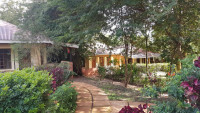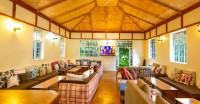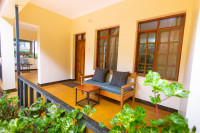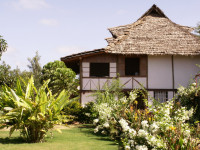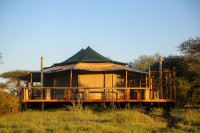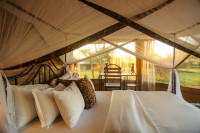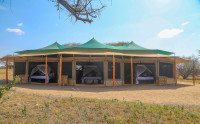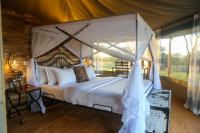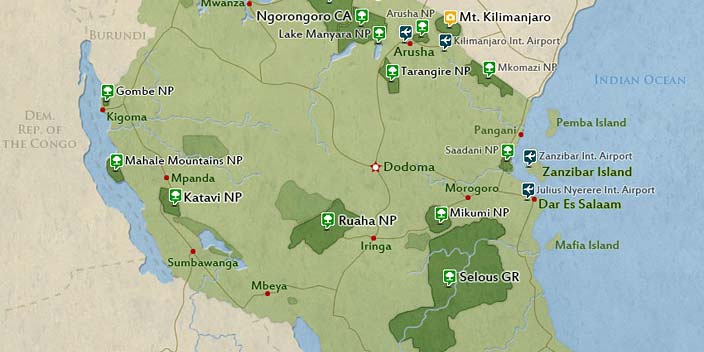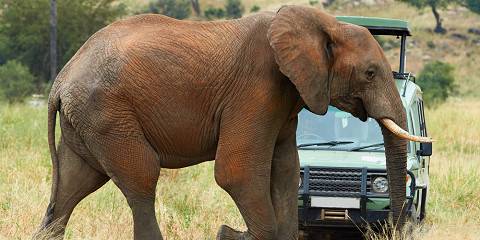
Arrival
Arrival

Day 1
Arusha to Tarangire National Park for Safari Tour
Arusha to Tarangire National Park for Safari Tour
After an early breakfast, we will pick you up from your hotel in Arusha and depart for Tarangire National Park, named after the Tarangire River that flows through it. Known as the ‘river of warthogs,’ it’s the only water source for wildlife during the dry season. The park features dense vegetation, including elephant grass, acacia woodlands, and lush groundwater forests. Tarangire is famous for its large elephant families, often seen gathering by the river. You might also spot giraffes, bushbucks, and hartebeests, all closely followed by predators like lions and leopards. The park is home to more breeding bird species than anywhere else in the world. Scattered throughout are ancient baobab trees, some over 200 years old. In the late afternoon, we’ll drive to your accommodation for dinner and an overnight stay.
- Main Destination:
- Tarangire National Park
- Accommodation:
- Eileen's Trees Inn
- Meals & Drinks:

Day 2-4
Safari in Serengeti National Park
Safari in Serengeti National Park
After an early breakfast, we’ll drive through the Ngorongoro Conservation Area, making our way to Serengeti National Park with game viewing along the way. Serengeti is renowned worldwide for its unparalleled natural beauty and scientific significance, boasting the highest concentration of plains game in Africa. The park is perhaps most famous for its incredible migration, where over a million wildebeest and around 200,000 zebras travel south from the northern hills to the southern plains for the short rains in October and November. After the long rains in April, May, and June, the herds move west and north. Their ancient migration instincts are so strong that no drought, gorge, or crocodile-filled river can stop them. Serengeti is home to the legendary great wildebeest migration. In the late afternoon, we’ll drive back to your accommodation for dinner and an overnight stay.
- Main Destination:
- Serengeti National Park
- Accommodation:
- Serengeti Sound of Nature Tented Camp
- Meals & Drinks:

Day 5
Serengeti National Park to Ngorongoro Crater
Serengeti National Park to Ngorongoro Crater
After an early breakfast, we’ll drive out of Serengeti and head to Ngorongoro Crater for a game viewing drive. The Ngorongoro Crater is one of Africa’s most iconic destinations, known for having the highest concentration of wildlife on the continent. Often called the "eighth Wonder of the World," it has earned worldwide fame and attracts more visitors each year. While you’ll likely encounter other vehicles, the extraordinary wildlife viewing in this breathtaking setting is unmatched. Ngorongoro, a UNESCO World Heritage Site, is truly unique, offering one of the best opportunities in Africa to spot the endangered black rhinoceros. The park is home to all of the Big Five and is particularly well-known for its lions and Cape buffalo, which can be seen year-round. We’ll enjoy a packed lunch at a scenic picnic spot before driving to your lodge for dinner and an overnight stay.
- Main Destination:
- Ngorongoro Crater
- Accommodation:
- Eileen's Trees Inn
- Meals & Drinks:

Day 6
Lake Manyara National Park to Arusha
Lake Manyara National Park to Arusha
Start your day with an early breakfast before heading to the nearby Lake Manyara National Park for an exciting game drive. Your adventure begins with a glimpse of large baboon troops. The park gets its name from a local Maasai term, ‘Emanyara,’ which refers to the Euphorbia tirucalli plant. Along the grassy shores of the lake, you'll see scattered yellow fever trees, while the striking Rift Valley escarpment forms a stunning backdrop. The park’s entrance is set within a unique environment—a groundwater forest that offers a refreshing contrast to the typical savannah landscape. Here, you’ll witness tree-climbing lions, a soda lake teeming with thousands of flamingos, various waterfowl, baboon troops, and the dramatic Rift Valley. Afterward, enjoy a packed lunch at a scenic picnic site. In the late afternoon, we will drive back to Arusha where we will drop you off at the hotel of your choice.
- Main Destination:
- Lake Manyara National Park
- Accommodation:
- No accommodation (End of tour)
- Meals & Drinks:















